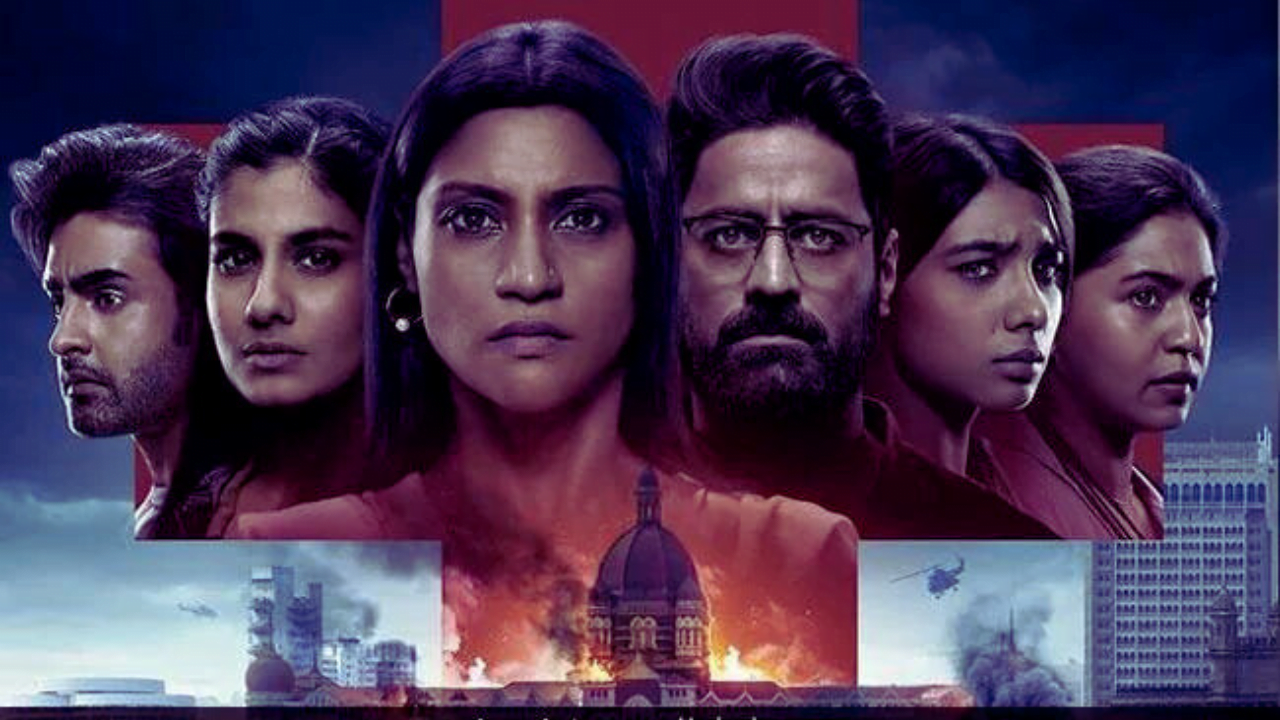In the second season of Mumbai Diaries, Mohit Raina and Konkona Sen Sharma reprise their roles amid the chaos of the Mumbai floods.
The series begins with a sense of urgency, picking up where Season 1 left off in 2009 during the devastating floods. Dr. Kaushik Oberoi (played by Mohit Raina) faces accusations of ineptitude and other serious offenses, leading to a gripping performance by Raina. His pregnant wife, Ananya Ghosh (Tina Desai), is understandably worried about him, especially after he freezes in a critical medical emergency, resulting in a tragic loss of life. The headlines label him a criminal, with 73% of the audience convinced of his guilt.
The story also introduces us to Dr. Oberoi’s three trainees: Drs. Sujata Ajawale (Mrunmayee Deshpande), Dr. Ahaan Mirza (Satyajeet Dubey), and Dr. Diya Parekh (Natasha Bharadwaj). Each of them faces their own set of challenges, some more daunting than others.
Konkona Sen Sharma shines as Dr. Chitra Das, the director of social services at Bombay General Hospital. Her portrayal brings depth to the character, especially when Dr. Saurav Chandra (Parambrata Chattopadhyay) arrives, triggering flashbacks from her past. Amidst the chaos, Chitra barely has time to acknowledge Ahaan’s Love Aaj Kal performance tickets as she grapples with her own medical issues. The hospital turns into a nightmarish place with a constant influx of patients, surgeries, and revelations, all while the relentless rain wreaks havoc on the city and its residents.
Mumbai Diaries deftly shifts between its ensemble cast, carefully revealing information to keep the audience engaged. The writers, Yash Chettija and Persis Sodawaterwala, make a commendable effort to delve into the unique storylines of each character. While some arcs hit the mark, others miss the target. The recurring storyline involving Ahaan, Chitra, and Saurav feels disjointed and out of place. Mansi Hirani’s subplot, where she is coerced into covering Breaking News, takes an unexpected turn, but her character’s frustration is inadequately conveyed amid Maahir Zaveri’s overzealous editing.
The standout performance in Mumbai Diaries Season 2 undoubtedly belongs to Mohit Raina. His portrayal of Dr. Kaushik Oberoi is both painful and emotionally charged, leaving a lasting impact.
For More: News
One of the primary issues with this season is the lack of balance between numerous plotlines and the overarching narrative of a struggling hospital. The series often leans towards dramatic revelations and personal conflicts, overshadowing the broader issues of the flawed healthcare system and the impending peril posed by the climatic disaster. Moments that do resonate, such as Dr. Kaushik’s emotional journey and the reunion with Ananya, are few and far between.
While the sequel of Mumbai Diaries pushes the original concept to its limits, it rarely pauses to allow the audience to catch their breath. Prolonged interpersonal tensions diminish the momentum of the tragedy. The larger context of the climatic disaster, media sensationalism, and the healthcare system’s shortcomings remain in the shadows. By the conclusion, the characters’ worries are resolved predictably, missing an opportunity to address the underlying anger and frustration.
In the end, Mumbai Diaries Season 2 stands as a series with a distinctive voice but falls short of fully exploring the societal and systemic issues it touches upon. As the suspense concludes, the sun is scheduled to rise, signaling relief from the worst, but the lingering question remains: where is the anger?
Their time is being consumed by a burns case. The victim has wounds in his soul as well as on his body. Or is it she? There is uproar when a child who may have been mistreated is rescued. A controlling husband is waiting in the shadows to attack his terrified wife. A vulgar moneybags is prowling the area and posing a menace to everyone.
With the recent arrivals of Parambrata Chattopadhyaya and Sanjay Narvekar, among others, all these strands have increased the commotion. In the first season, it somehow worked to the series’ advantage. This time, everything seems rushed and congested; rather than a sense of hurry, there is more panic and choppyness. There aren’t enough of the calmer, character-focused moments that work, where the characters converse with rather than at one another.
